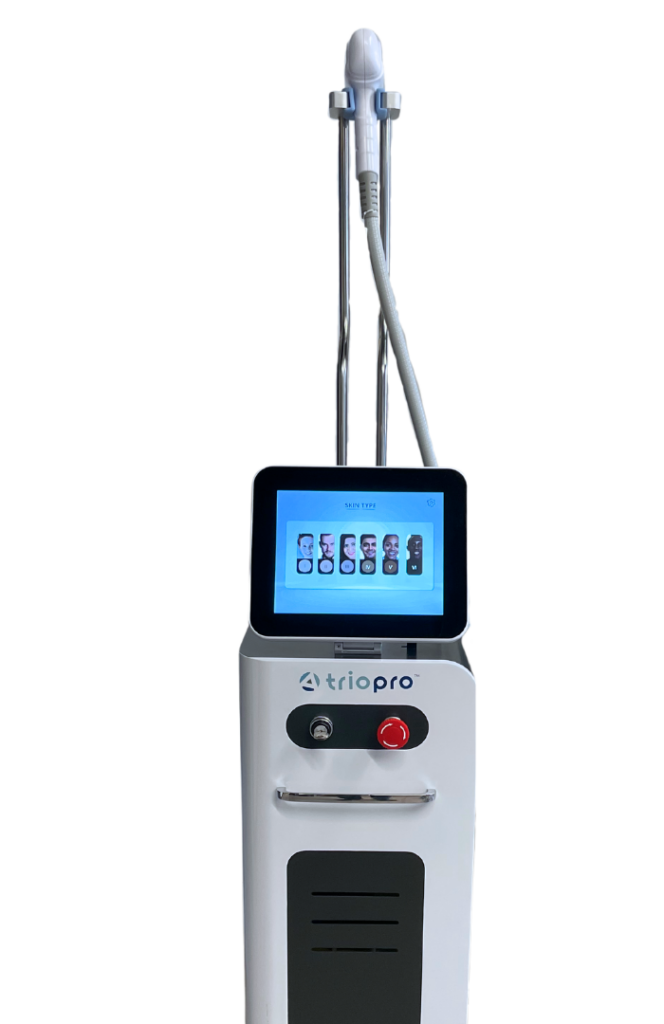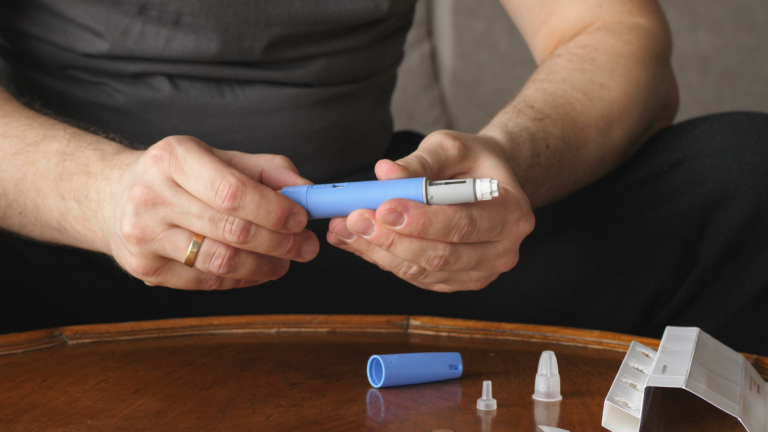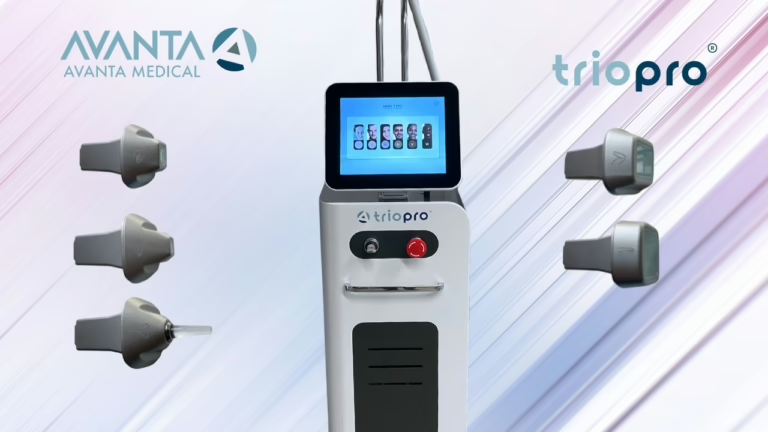The Ultimate Guide to How Laser Hair Removal Works
How laser hair removal works is a fascinating blend of science and technology, offering a long-term solution for unwanted hair. This popular aesthetic procedure uses cutting-edge technology to target hair follicles with concentrated light energy, providing a safe and effective way to achieve smoother skin.
Here, we delve into the science and process of laser hair removal.
Table of Contents
The Science Behind How Laser Hair Removal Works
Laser hair removal works by using a focused beam of light that is absorbed by the pigment (melanin) in the hair. This light energy is converted into heat, which damages the hair follicles. The damage inhibits future hair growth without harming the surrounding skin.
The effectiveness of the treatment depends on the contrast between the hair and skin color. Dark hair on lighter skin tends to absorb the laser more effectively, making the treatment more efficient.
However, advancements in laser technology have made it possible to treat a broader range of skin tones and hair types.
To better understand the science behind laser hair removal and how it works, check out this informative video featuring Claudio from Body Details.
He breaks down the process step by step, explaining how laser technology targets hair follicles to deliver long-lasting results.
Whether you’re considering laser hair removal or want to know more about the technology, this video is the perfect place to start. Watch below!
The Process of How Laser Hair Removal Works
- Consultation and Preparation
- Before undergoing laser hair removal, you will have a consultation to discuss your skin type, hair type, and treatment goals. During this session, your provider will determine if you are a suitable candidate.
- Preparation may include shaving the treatment area 24-48 hours beforehand to ensure the laser targets the hair follicle beneath the skin.
- Treatment Session
- During the procedure, a handheld laser device is applied to the treatment area. The laser emits pulses of light that penetrate the skin and target the hair follicles.
- To ensure comfort, modern devices often include cooling mechanisms, such as sapphire cooling, to protect the skin and minimize discomfort.
- Each session typically lasts 15-60 minutes, depending on the size of the treatment area.
- Post-Treatment Care
- After the session, you may experience slight redness or swelling, which usually subsides within a few hours.
- Applying a soothing cream or gel and avoiding sun exposure will help ensure optimal results and skin recovery.
Why Multiple Sessions Are Needed
Hair grows in cycles, including active growth (anagen), transitional (catagen), and resting (telogen) phases. Laser hair removal is most effective during the anagen phase when the hair is actively growing.
Because not all hair follicles are in this phase at the same time, multiple sessions are required to achieve the desired results.
Typically, clients need 4-8 sessions spaced 4-6 weeks apart to target all the hair in the treatment area effectively. Maintenance sessions may be necessary for long-term results.
Benefits of Laser Hair Removal
- Precision: Lasers selectively target dark, coarse hair while leaving the surrounding skin undamaged.
- Speed: Each pulse of the laser takes a fraction of a second and can treat multiple hairs simultaneously.
- Long-Term Results: Many clients experience permanent hair reduction after completing their treatment sessions.
- Versatility: Laser hair removal can be used on various body areas, including the face, legs, arms, underarms, bikini line, and back.
Advancements in Laser Technology

Recent innovations in laser technology have expanded the range of treatable skin tones and hair types. For example, devices using multiple wavelengths, such as 755nm, 808nm, and 1064nm, can address different needs and provide enhanced results.
Additionally, sweeping motion techniques improve efficiency and reduce discomfort compared to traditional stamping methods.
One standout device in laser hair removal technology is the TrioPro®. Designed with advanced features, the TrioPro utilizes 755nm, 808nm, and 1064nm wavelengths to cater to diverse skin types and hair colors.
Its innovative sweeping motion ensures faster, more comfortable treatments, making it a preferred choice for both providers and clients.
The sapphire cooling technology enhances patient comfort, reducing irritation while delivering exceptional results. This makes the TrioPro a leader in the field of laser hair removal technology.
Is Laser Hair Removal Right for You?
Laser hair removal is a safe and effective option for individuals seeking a long-term solution to unwanted hair. However, it’s essential to consult with a qualified provider to determine if this treatment is suitable for your skin and hair type.
With proper care and adherence to treatment schedules, you can enjoy smooth, hair-free skin for years to come.
Ready to elevate your practice with the latest in laser hair removal technology? Discover the power of the TrioPro® and see how it can transform your treatment offerings.
Contact us today to learn more or schedule a demo! By incorporating the latest advancements in how laser hair removal works, including the cutting-edge TrioPro, you can offer unmatched results to your clients.
FAQ: Laser Hair Removal
How does laser hair removal work?
Laser hair removal uses a concentrated beam of light absorbed by the pigment (melanin) in the hair. This light energy converts to heat, damaging the hair follicle and inhibiting future hair growth while leaving the surrounding skin unaffected.
Is laser hair removal permanent?
While laser hair removal significantly reduces hair growth, results vary. Many individuals experience long-term hair reduction after completing multiple sessions, but maintenance treatments may be needed for optimal results.
How many sessions are required?
Most clients require 4-8 sessions spaced 4-6 weeks apart. This is because hair grows in cycles, and the treatment is most effective during the active growth (anagen) phase.
What areas of the body can be treated?
Laser hair removal can target various areas, including the face, arms, legs, underarms, bikini line, and back. It is versatile and suitable for both small and large treatment areas.
Does laser hair removal work for all skin tones and hair types?
Advancements in laser technology, like the TrioPro®, allow for treatment across a broader range of skin tones and hair types. Devices with multiple wavelengths, such as 755nm, 808nm, and 1064nm, can cater to diverse needs.
Does laser hair removal hurt?
Modern laser devices incorporate cooling mechanisms, such as sapphire cooling, to minimize discomfort. Most clients describe the sensation as a mild snap, like a rubber band, but this varies by individual and treatment area.
What should I do before a laser hair removal session?
Shave the treatment area 24-48 hours before your appointment.
Avoid waxing or plucking hair before the procedure, as the laser targets the hair follicle.
Refrain from sun exposure or tanning to minimize skin sensitivity.







